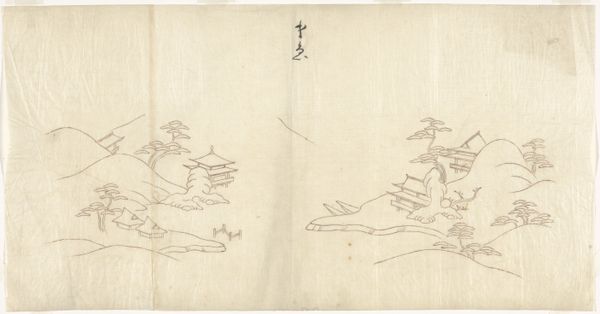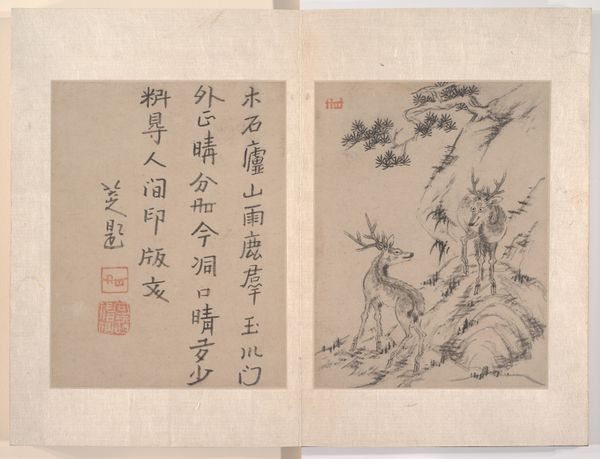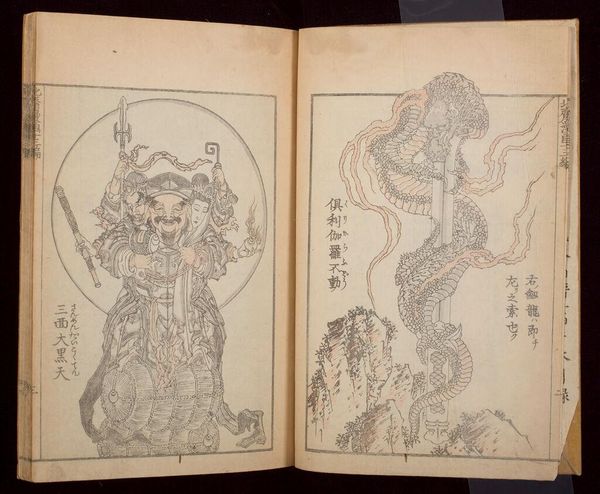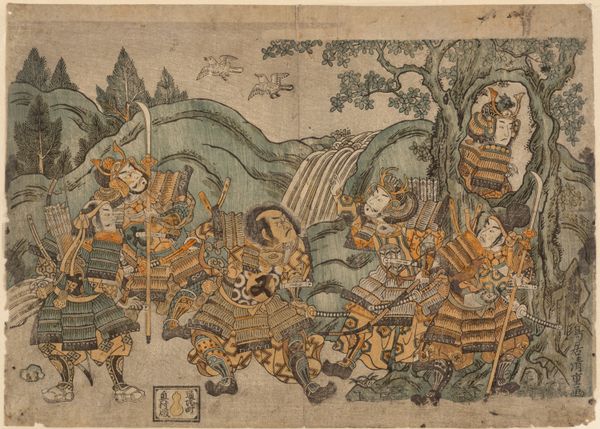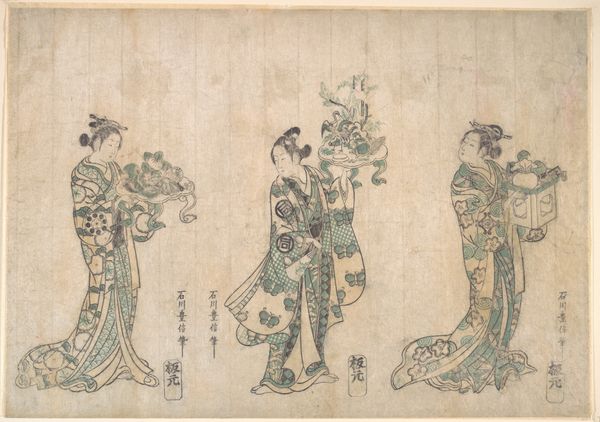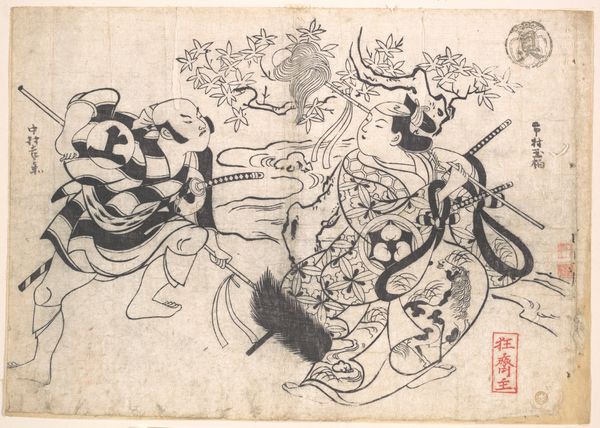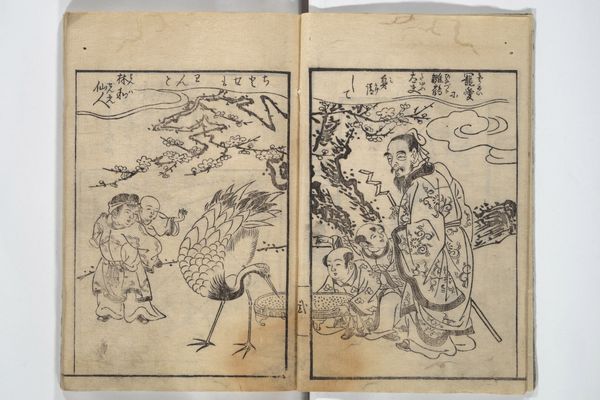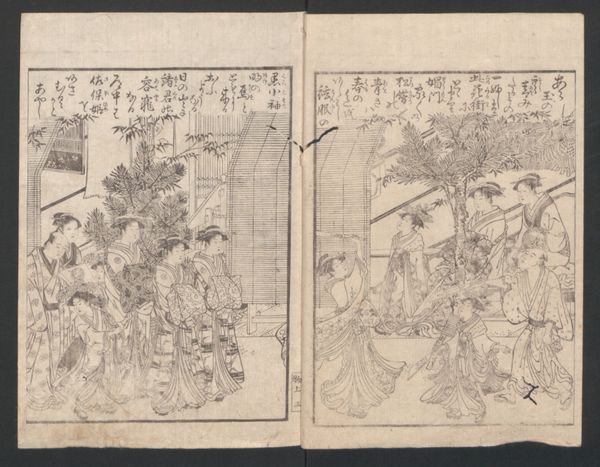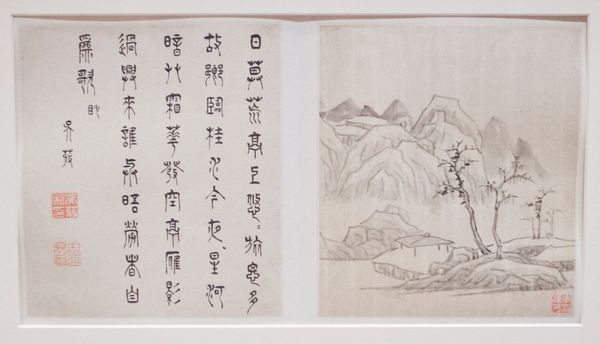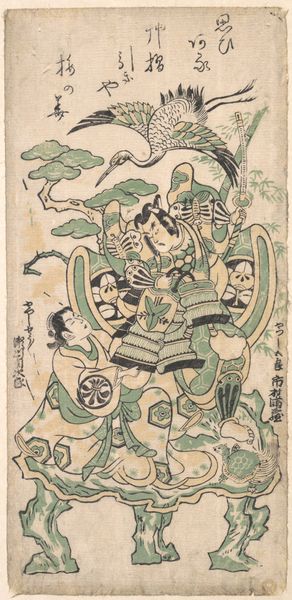
Iconographic drawings of the forms of Kannon Possibly 1230 - 1235
0:00
0:00
drawing, paper, ink-on-paper, ink
#
drawing
#
medieval
#
narrative-art
#
asian-art
#
figuration
#
paper
#
ink-on-paper
#
ink
#
line
#
watercolour illustration
Dimensions: 9 15/16 × 503 1/4 in. (25.24 × 1278.26 cm) (image)9 15/16 × 517 in. (25.24 × 1313.18 cm) (mount, without roller)
Copyright: Public Domain
Curator: I find these "Iconographic Drawings of the Forms of Kannon," likely dating back to 1230-1235, truly captivating. Look at the detail achieved with just ink on paper. Editor: They've got an austere quality; the monochromatic ink emphasizes the bare essence of these divine figures. The visible texture of the aged paper is striking— you immediately notice the work that went into the production. Curator: Exactly. Each figure is meticulously rendered, almost like a manual, intended for some workshop. The arrangement isn't chaotic; the lines, while intricate, appear systematic. The image invites you into a world steeped in Buddhist beliefs, influenced by political and institutional conditions of its time. Editor: Absolutely, these were created using relatively accessible materials, emphasizing functionality over sheer ornament, the means of production speaks to repetitive, precise labor and accessible devotion for, say, an apprentice who has yet to have access to fancier dyes. You also see the commitment from whoever was in charge of physically realizing it at that moment, and a desire for these values to pass onto whoever learns with this manual. Curator: That makes sense; the drawings served an important didactic purpose within the artistic and religious sphere. The standardization and visual codes assisted propagation of particular ideologies as much as in technical and aesthetic education. What do you make of Kannon's depictions themselves? Editor: Well, the many arms symbolize the deity’s capacity to act in many places, and this is common. What draws me in is the lines: they are thin and precise but contain such active energy in these gods who act like powerful yet benevolent forces, yet made with such common material, bridging spiritual significance with real availability. Curator: An excellent point, and worth pondering as one explores these works in a museum setting today. It certainly urges you to appreciate both their historical context and also reflect upon current access to imagery of political, institutional and spiritual power in today's culture. Editor: And the humble nature of its craftsmanship reminds me that access is paramount: this image, although of divine subject matters, was intended as functional material from accessible labor that is intended for equally accessible teaching and potentially equally devotional access. It also reminds us how something as rudimentary as ink-on-paper has enabled spiritual reflection for centuries.
Comments
No comments
Be the first to comment and join the conversation on the ultimate creative platform.
